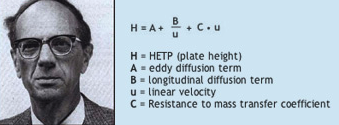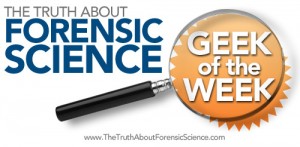Our good friend, Ron Moore, Esquire writes us “I actually had a client researching lawyers who looked at the Truth About Forensic Science geek of the week posts and liked my answers. It made a difference in who he decided to hire. Thanks!” So, there is a lot of value in www.TheTruthAboutForensicScience.com Forensic Science Geek of the Week Challenge. Try it out today.
Forensic Science Geek of the Week
Thanks to the combined inspiration of Christine Funk, Esquire and Chuck Ramsay, Esquire, a new twist of this blog is being introduced. A weekly fun forensic science challenge/trivia question. The winner will be affectionately dubbed “www.TheTruthAboutForensicScience.com Forensic Science Geek of the Week.”
Rules:
- The challenge will be posted Sunday morning 12 noon EST.
- Answers to the challenge will be entered by responding to this blog post or thewww.TheTruthAboutForensicScience.com FaceBook fan page.
- All comments that are answers to this blog will released after 9pm EST.
- The first complete and correct answer will be awarded the envious title of “www.TheTruthAboutForensicScience.com Forensic Science Geek of the Week”
- “www.TheTruthAboutForensicScience.com Forensic Science Geek of the Week” is entitled a one time post of his/her picture on this blog and the www.TheTruthAboutForensicScience.com FaceBook fan page. The coveted title will be his/her for that week. Additionally, a winner will be allowed one link to one webpage of his/her choice. Both the picture and the weblink is subject to the approval of Justin J McShane, Esquire and will only be screened for appropriate taste.
- The winner will be announced Sunday night.
- A winner may only repeat two times in a row, then will have to sit out a week to be eligible again. This person, who was the two time in a row winner, may answer the question, but will be disqualified from the honor so as to allow others to participate.
- This is for learning and for fun. EVERYONE IS ENCOURAGED TO TRY TO ANSWER THE WEEKLY QUESTION. So give it a shot.
Here it is:
The www.TheTruthAboutForensicScience.com “Forensic Science Geek of the Week” challenge question. Remember the first full and complete answer wins the honor and also gets his/her photo displayed, bragging rights for the week and finally website promotion.
OFFICIAL QUESTION:

1. Who is this fellow?
2. When did he come up with the equation to the right?
3. What is the equation’s name?
4. Explain it.
The Hall of Fame for the www.TheTruthAboutForensicScience.com Forensic Science Geek of the Week:
Week 1: Chuck Ramsay, Esquire
Week 2: Rick McIndoe, PhD
Week 3: Christine Funk, Esquire
Week 4: Stephen Daniels
Week 5: Stephen Daniels
Week 6: Richard Middlebrook, Esquire
Week 7: Christine Funk, Esquire
Week 8: Ron Moore, B.S., J.D.
Week 9: Ron Moore, B.S., J.D.
Week 10: Kelly Case, Esquire and Michael Dye, Esquire
Week 11: Brian Manchester, Esquire
Week 12: Ron Moore, B.S., J.D.
Week 13: Ron Moore, B.S., J.D.
Week 14: Josh Lee, Esquire
Week 15: Joshua Dale, Esquire and Steven W. Hernandez, Esquire
Week 16: Christine Funk, Esquire
Week 17: Joshua Dale, Esquire
Week 18: Glen Neeley, Esquire
Week 19: Amanda Bynum, Esquire
Week 20: Josh Lee, Esquire
Week 21: Glen Neeley, Esquire
Week 22: Stephen Daniels
Week 23: Ron Moore, B.S., J.D.
Week 24: Bobby Spinks
Week 25: Jon Woolsey, Esquire
Week 26: Mehul B. Anjaria
Week 27: Richard Middlebrook, Esquire
Week 28:Ron Moore, Esquire
Week 29: Ron Moore, Esquire
Week 30: C. Jeffrey Sifers, Esquire
Week 31: Ron Moore, Esquire
Week 32: Mehul B. Anjaria
Week 33: Andy Johnston
Week 34: Ralph R. Ristenbatt, III
Week 35: Brian Manchester, Esquire
Week 36: Ron Moore, Esquire
Week 37: Jeffrey Benson
Week 38: Pam King, Esquire
Week 39: Josh Lee, Esquire
Week 40: Robert Lantz, Ph.D.
WEEK 41: UNCLAIMED, IT COULD BE YOU!
Week 42: Steven W. Hernandez, Esquire
Week 43:Ron Moore, Esquire
Week 44: Mehul B. Anjaria
Week 45: Mehul B. Anjaria
Week 46:Ron Moore, Esquire
Week 47:Ron Moore, Esquire
Week 47:Ron Moore, Esquire
Week 48: Leslie M. Sammis, Esquire
Week 49: Ron Moore, Esquire
Week 50: Jeffery Benson
Week 51: Mehul B. Anjaria
Week 52: Ron Moore, Esquire
Week 53: Eric Ganci, Esquire
Week 54: Charles Sifers, Esquire and Tim Huey, Esquire
Week 55: Joshua Andor, Esquire
Week 56: Brian Manchester, Esquire
Week 57: Ron Moore, Esquire
Week 58: Eric Ganci, Esquire
Week 59: Ron Moore, Esquire
Week 60: Brian Manchester, Esquire
Week 61: UNCLAIMED IT COULD BE YOU!
Week 62: UNCLAIMED IT COULD BE YOU!




Ginger Moss says:
JJ van Deemter
1956
Van Deemter Equation
According to Wikipedia: The Van Deemter equation in chromatography relates the variance per unit length of a separation column to the linear mobile phase velocity by considering physical, kinetic, and thermodynamic properties of a separation.[1] These properties include pathways within the column, diffusion (axial and longitudinal), and mass transfer kinetics between stationary and mobile phases. In liquid chromatography, the mobile phase velocity is taken as the exit velocity, that is, the ratio of the flow rate in ml/second to the cross-sectional area of the ‘column-exit flow path.’ For a packed column, the cross-sectional area of the column exit flow path is usually taken as 0.6 times the cross-sectional area of the column. Alternatively, the linear velocity can be taken as the ratio of the column length to the dead time. If the mobile phase is a gas, then the pressure correction must be applied. The variance per unit length of the column is taken as the ratio of the column length to the column efficiency in theoretical plates. The Van Deemter equation is a hyperbolic function that predicts that there is an optimum velocity at which there will be the minimum variance per unit column length and, thence, a maximum efficiency. The Van Deemter equation was the result of the first application of rate theory to the chromatography elution process.